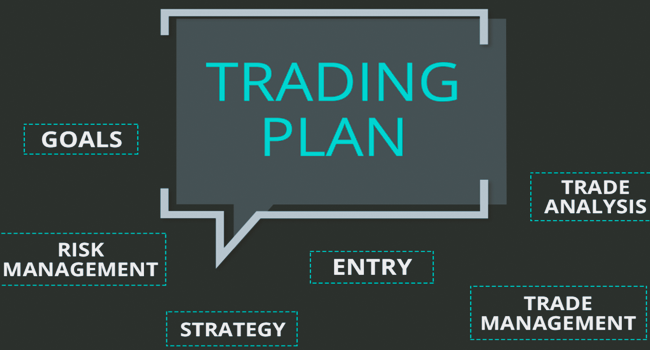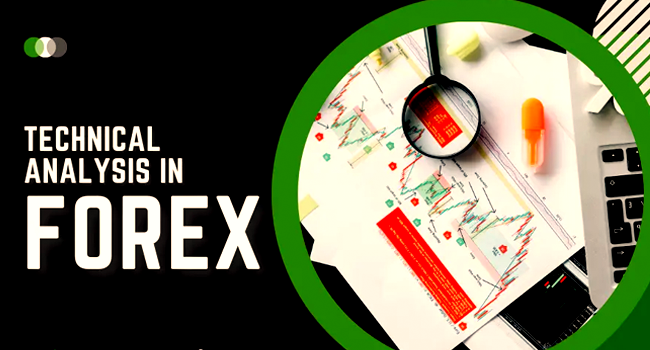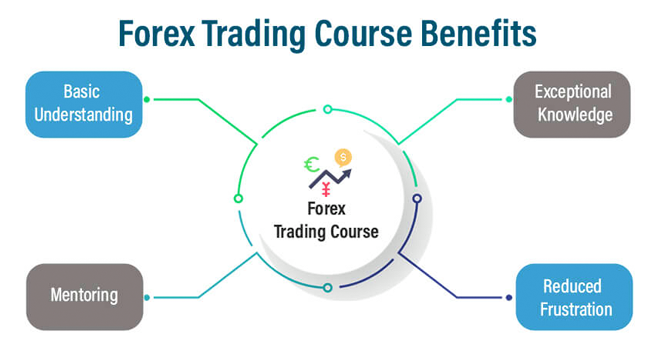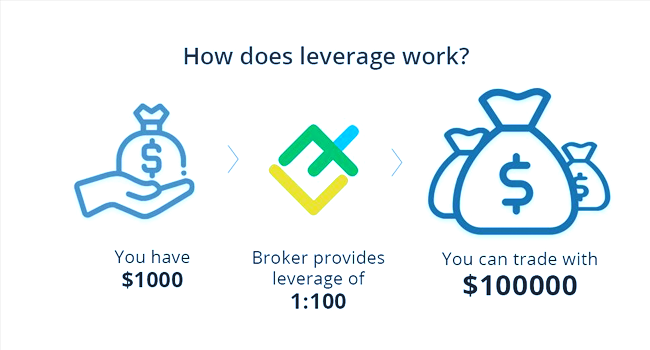Introduction
Developing a forex trading strategy is a crucial step for traders aiming to achieve consistent profitability in the dynamic and ever-changing forex market. A well-defined trading strategy provides a structured approach to analyzing the market, making trading decisions, and managing risk effectively. It combines various elements, including technical and fundamental analysis, risk management, and emotional discipline, to create a plan tailored to individual trading goals and risk tolerance. In this comprehensive guide, we will walk you through the process of developing a robust forex trading strategy that aligns with your unique trading style.
Step 1: Defining Your Trading Goals and Risk Tolerance
The main step in developing a forex trading strategy is to define your trading goals and risk tolerance. Ask yourself the following questions:
– What are your financial goals for trading? Are you looking for short-term wealth or long-term gain-building?
– How much capital are you willing to risk on each business?
– What is your maximum acceptable drawdown (the peak-to-trough decline in your account balance)?
– How much time can you dedicate to trading each day or week?
Understanding your objectives and risk tolerance will help shape the overall structure of your trading strategy.
Step 2: Choosing a Trading Style
Forex trading offers various styles, each with its own advantages and challenges. Common trading styles include:
Day Trading
Day businessmen open and close positions within the same trading day, avoiding overnight exposure. They aim to profit from short-term price movements and often execute multiple trades daily.
Swing Trading
Swing traders hold positions for several days or weeks, aiming to capture medium-term price swings within a broader trend.
Position Trading
Position traders take long-term positions based on fundamental analysis and broader market trends. They may hold positions for short or long time periods.
Choose a trading style that aligns with your personality, schedule, and risk tolerance.
Step 3: Conducting Market Analysis
Market analysis is a crucial aspect of any forex trading strategy. It involves two main types of analysis:
Technical Analysis
Technical analysis involves analyzing historical price data and chart patterns to identify trends and potential entry and exit points. Traders use various technical indicators, trend lines, and chart patterns to make informed decisions.
Fundamental Analysis
Fundamental analysis involves evaluating economic indicators, central bank policies, geopolitical events, and market sentiment to understand currency movements. This analysis provides a broader context for price movements.
Both technical and fundamental analysis can be integrated into your trading strategy, providing a comprehensive view of the market.
Step 4: Selecting Trading Indicators and Tools
Based on your chosen trading style and analysis, select appropriate trading indicators and tools to support your strategy. Common technical indicators include Moving Averages, Relative Strength Index (RSI), Moving Average Convergence Divergence (MACD), and Bollinger Bands. Additionally, consider using support and resistance levels, Fibonacci retracements, and other chart patterns.
Step 5: Developing Entry and Exit Rules
Define clear entry and exit rules for your trades based on your chosen indicators and analysis. These rules should outline:
– When to enter a trade (e.g., after a specific technical signal or based on fundamental analysis).
– When to exit a trade (e.g., using profit targets, trailing stops, or stop-loss orders).
– How to manage trades in different market conditions (e.g., during high volatility or low liquidity).
Having well-defined entry and exit rules helps remove emotional biases and keeps your trading consistent.
Step 6: Implementing Risk Management Strategies
Risk management is a fundamental aspect of any successful trading strategy. Determine the maximum percentage of your trading capital you are willing to risk on each trade (often referred to as the risk per trade). This percentage should align with your overall risk tolerance.
Additionally, set stop-loss orders to limit potential losses on each trade. Consider position sizing based on the trade’s risk and the size of your trading account.
Step 7: Backtesting and Optimization
Before applying your trading strategy in live markets, back-test it on historical data to assess its performance. Backtesting involves applying your strategy to past price movements to see how it would have performed under different market conditions. Analyze the results and identify areas for improvement.
Optimize your strategy by adjusting its parameters based on back-testing results. However, be cautious of overfitting the strategy to historical data, as this may lead to poor performance in live trading.
Step 8: Paper Trading or Demo Trading
After optimizing your strategy, test it in a risk-free environment using paper trading or a demo account. This step allows you to gain confidence in your strategy without risking real money.
Step 9: Implementing the Strategy in Live Trading
Once you have thoroughly tested and refined your strategy, it’s time to implement it in live trading. Start with a small trading size and gradually increase as you gain confidence in the strategy’s performance.
Step 10: Continuously Monitor and Adapt
The forex market is constantly evolving, and no strategy is foolproof. Continuously monitor the performance of your trading strategy and be open to making adjustments as needed. Stay updated with market developments, economic events, and changes in market sentiment.
Forex trading involves significant risks, and individuals should carefully consider their financial situation and risk tolerance before participating in the forex market. Always seek professional advice when needed.
Bonus Tips for Developing a Successful Forex Trading Strategy
To further enhance your forex trading strategy, consider the following bonus tips:
Journal Your Trades
Keep a detailed trading journal to record every trade you take, including the reasons for entering and exiting the trade, the strategy used, and the outcome. Reviewing your journal regularly can provide valuable insights into the strengths and weaknesses of your trading strategy and help you identify areas for improvement.
Stay Disciplined
Discipline is the key to successful forex trading. Stick to your trading plan, follow your strategy’s rules, and avoid making impulsive decisions based on emotions or market noise.
Use Multiple Timeframes
Analyze forex charts across different timeframes to gain a comprehensive view of market trends. Higher timeframes can provide overall market direction, while lower timeframes can offer more precise entry and exit points.
Diversify Your Portfolio
Consider diversifying your trading portfolio by trading different currency pairs and even other financial instruments. Diversification can help spread risk and potentially increase opportunities for profits.
Keep Learning
The forex market is continually evolving, and there is always more to learn. Stay updated with market developments, economic news, and changes in central bank policies. Continuous learning will improve your market analysis skills and decision-making.
Manage Emotions
Emotions can influence trading decisions and lead to irrational behavior. Implement techniques to manage emotions, such as taking breaks during stressful periods, sticking to your trading plan, and using meditation or mindfulness techniques.
Stay Informed About Global Events
Global events, such as economic data releases, central bank announcements, and geopolitical developments, can significantly impact currency movements. Stay informed about upcoming events and their potential effects on the forex market.
Avoid Overtrading
Stick to your trading plan and avoid entering trades solely out of boredom or a desire to be
constantly active in the market.
Review and Revise
Regularly review your trading strategy’s performance and be willing to revise and adapt it as needed. A successful strategy is one that can evolve with changing market conditions.
Practice Patience
Forex trading requires patience and a long-term perspective. Avoid chasing quick profits or becoming discouraged by short-term losses. Focus on the overall performance of your strategy over time.
Conclusion
Developing a forex trading strategy is a journey that requires a combination of knowledge, discipline, and experience. A well-crafted strategy provides a roadmap for navigating the complexities of the forex market and increases your chances of achieving trading success.
Remember that there is no one-size-fits-all approach to trading, and what works for one trader may not work for another. Tailor your strategy to match your trading goals, risk tolerance, and preferred trading style.
Lastly, be prepared for setbacks and losses, as they are a natural part of forex trading. Embrace each trade as an opportunity to learn and improve your skills.
As you embark on your trading journey, remember to always trade responsibly, manage your risk diligently, and continually work on developing and refining your trading strategy.
FAQs (Frequently Asked Questions)
1. How do I know if my trading strategy is working?
Regularly assess the performance of your trading strategy by tracking its results over time. If your strategy aligns with your trading goals and risk tolerance and shows consistent profitability, it may be considered effective.
2. Can I use a combination of fundamental and technical analysis in my strategy?
Yes, integrating fundamental and technical analysis can provide a well-rounded view of the forex market. Combining these approaches can enhance the accuracy of your trading decisions.
3. Should I follow other traders’ strategies?
While it is beneficial to learn from other traders, it’s essential to develop your unique strategy tailored to your own trading goals and risk tolerance. Avoid blindly following others’ strategies without understanding their rationale.
4. How do I handle a losing streak in my trading strategy?
A losing streak is a common part of trading. Stay calm, review your trades to identify any patterns, and avoid making impulsive decisions to recoup losses. Stick to your risk management rules and maintain emotional discipline.
5. Is it essential to have a stop-loss in my trades?
Yes, a stop-loss is a crucial risk management tool that helps limit potential losses on a trade. Always use stop-loss orders to protect your trading capital.









